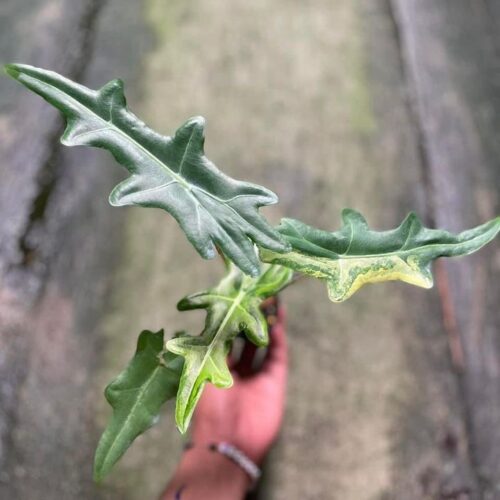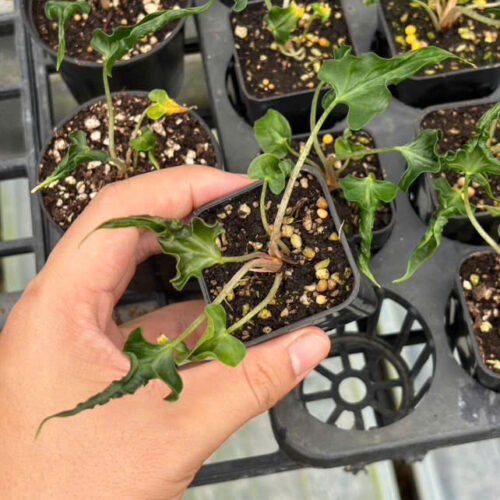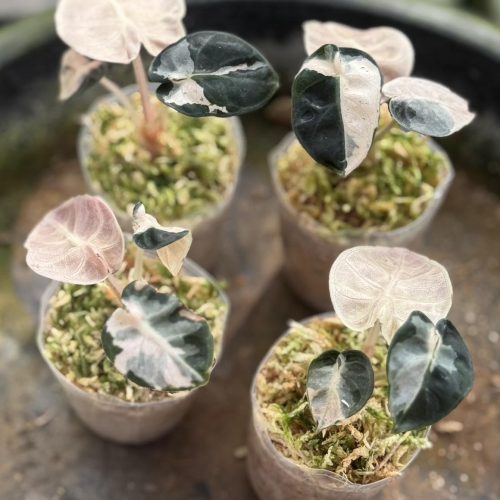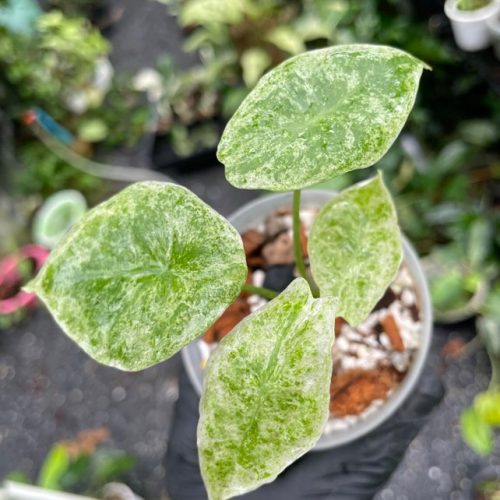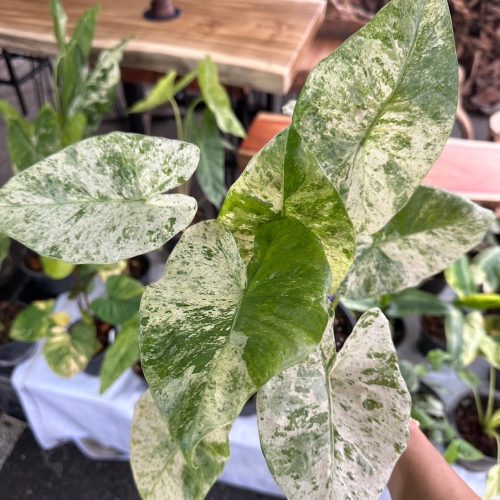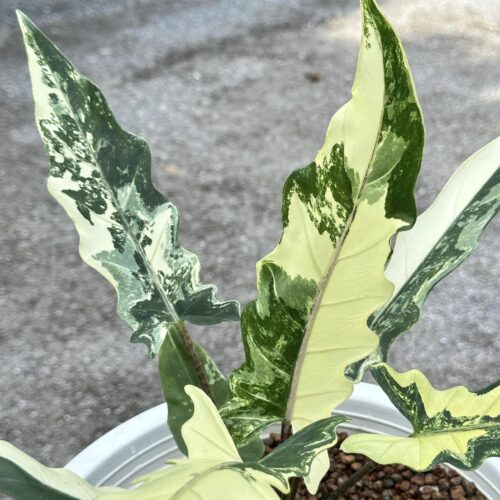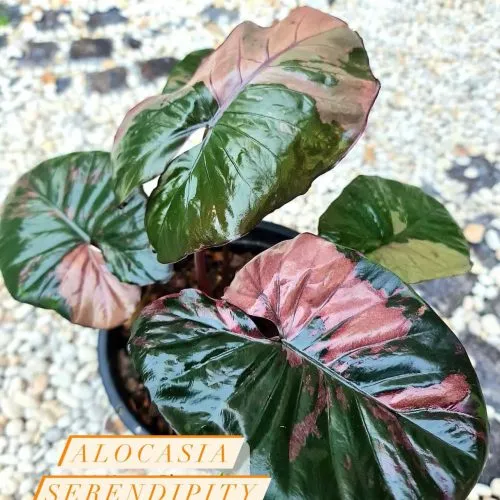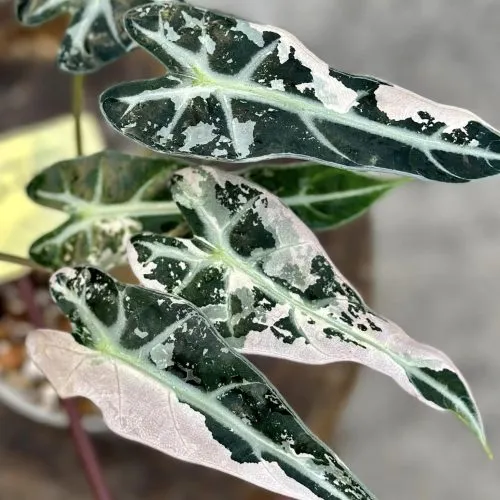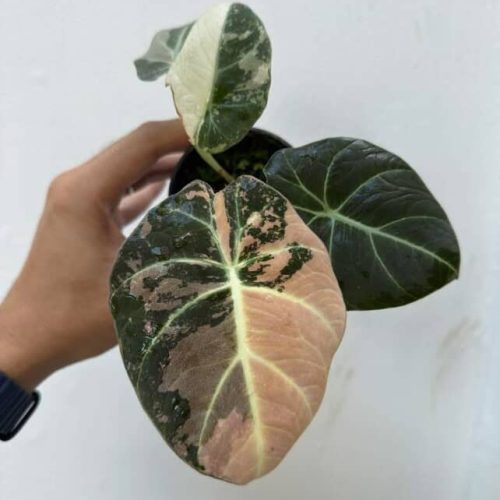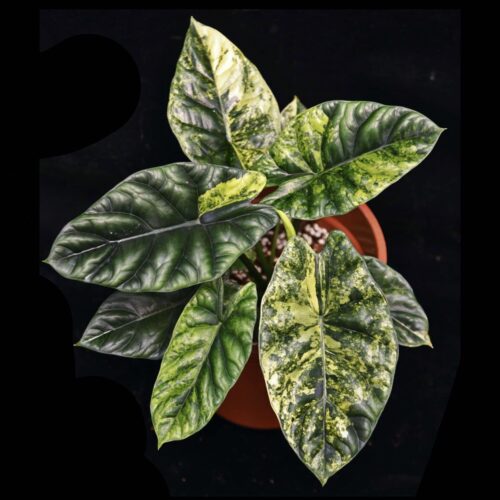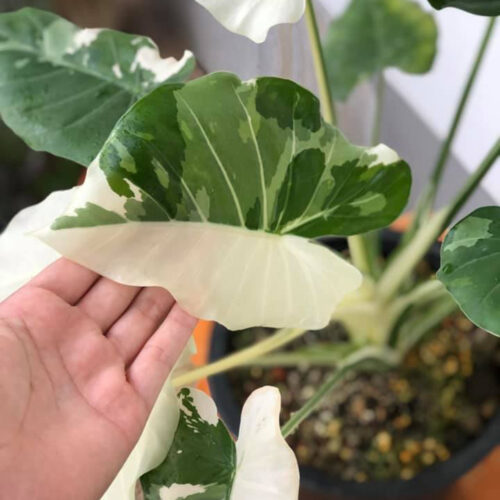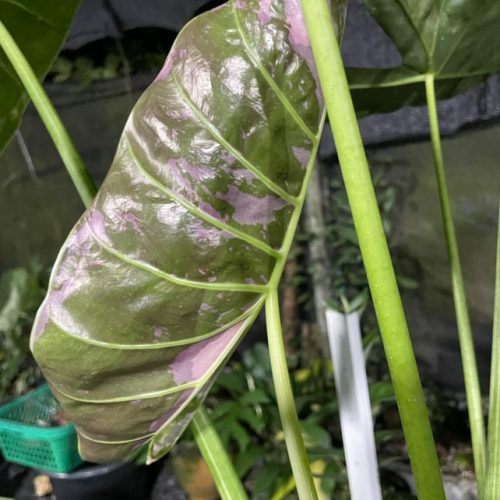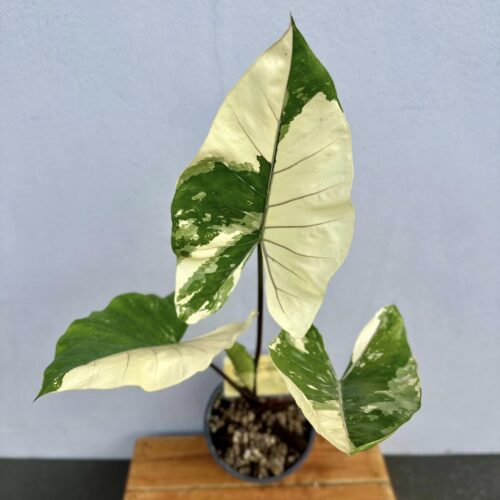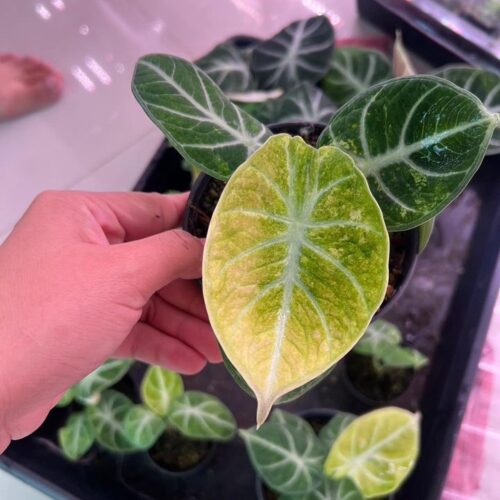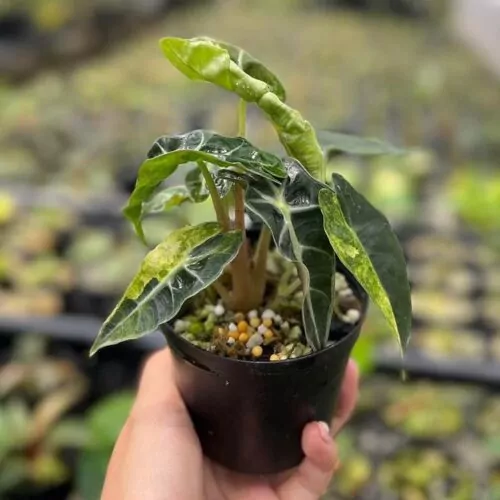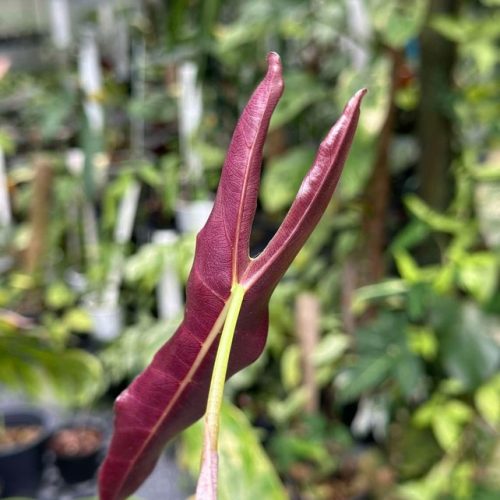The Variegated Black Velvet Alocasia is a striking plant that has captured the attention of houseplant enthusiasts. Known for its dark, velvety leaves with contrasting variegation, this plant is both exotic and elegant. This comprehensive guide will provide you with all the information you need to grow and care for the Variegated Black Velvet Alocasia successfully using tissue culture methods.
Introduction
The Variegated Black Velvet Alocasia is a member of the aroid plant family, which includes popular varieties like Philodendron, Monstera, and Anthurium. Native to the tropical regions of Asia, this plant is prized for its unique variegated leaves that feature a blend of dark green, almost black, with striking white or silver patterns. Similar to Aglaonema and Epipremnum, the Variegated Black Velvet Alocasia is not only beautiful but also relatively easy to propagate through tissue culture.

Appearance of Alocasia Black Velvet Variegated
The alocasia black velvet variegated, also known as alocasia polly black velvet, has dark blackish-green leaves marked with prominent white or silver variegation. The leaves have an almost velvety sheen, living up to the “black velvet” name.
Foliage Colors
The leaves display a deep green background behind the nearly white variegation. The variegation appears along the leaves’ veins, resulting in a skeletal or net-like pattern.
Leaf Size and Shape
The leaves of the alocasia black velvet variegated grow quite large, typically to a length of 12-15 inches. The leaves have a triangular or arrow shape that gives them a bold, dramatic look.
Growth Pattern
This alocasia variety grows outward and upward, reaching heights of 3-4 feet tall and 2-3 feet wide under ideal conditions. It has an upright habit rather than vining or trailing.
Origin and Family History
The alocasia black velvet originated as a sport or mutated variety of the standard alocasia polly plant. It likely first appeared as a chance seedling exhibiting the distinctive dark leaves and lighter variegation.
Genus Classification
Alocasias belong to the Araceae family, which encompasses flowering tropical plants known as aroids. There are around 70 recognized species of alocasia.
For more insights on the origins and diversity of the Alocasia genus, including their native habitats, refer to “5 Must-Know Secrets of Alocasia Plants.”
Native Region
Alocasias are native to humid, tropical areas like the rainforests of Asia and Eastern Australia. They thrive in hot, consistently moist environments.
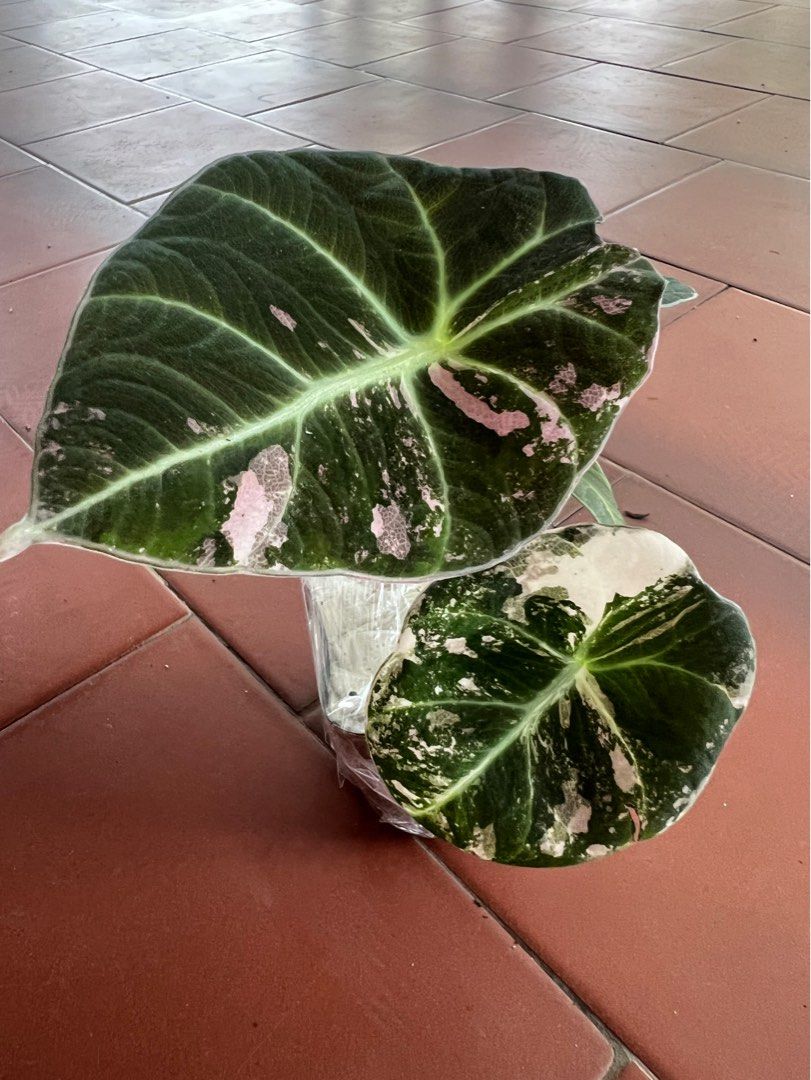
“Discover the unique charm of the Alocasia Black Velvet Variegated – a stunning addition to your plant collection. Click here to embrace the beauty of nature and make it yours today!”
Care Needs for Optimal Growth
While beautiful, the alocasia black velvet variegated does require specialized care to reach its full potential. This tropical plant prefers consistent warmth and humidity.
Light Requirements
This plant needs bright, indirect light to bring out the deep coloration of its foliage. Some direct sun is tolerated if gradually introduced.
Soil and Watering Needs
The alocasia black velvet grows best in well-draining, nutrient-rich soil. Allow the top inch to dry between waterings. These plants are sensitive to overwatering.
Temperature and Humidity Preferences
Warm indoor temperatures around 70-80°F suit this elephant ear well. High humidity is also essential, ideally around 60-80 percent to mimic its native tropics environment.
To ensure your Alocasia Black Velvet Variegated thrives, explore detailed care tips in “5 Tips to Grow Alocasia Indoors.”
Alocasia species are the most sought after by aroid plant lovers
Common Problems and Solutions
When grown improperly, alocasia black velvet can run into issues like root rot, fungal disease, or stunted growth. But these problems can be prevented with proper care.
Preventing Root Rot
Only water when the soil begins to dry out to prevent excess moisture around the roots, which can lead to deadly root rot.
Managing Pests
Common houseplant pests like spider mites or mealybugs can infest the leaves. Wipe with insecticidal soap or introduce predatory insects.
Fighting Fungal Infections
Leaf spot and other fungal diseases can occur in cool, overly damp conditions. Improve air circulation and water less to clear up fungal problems.
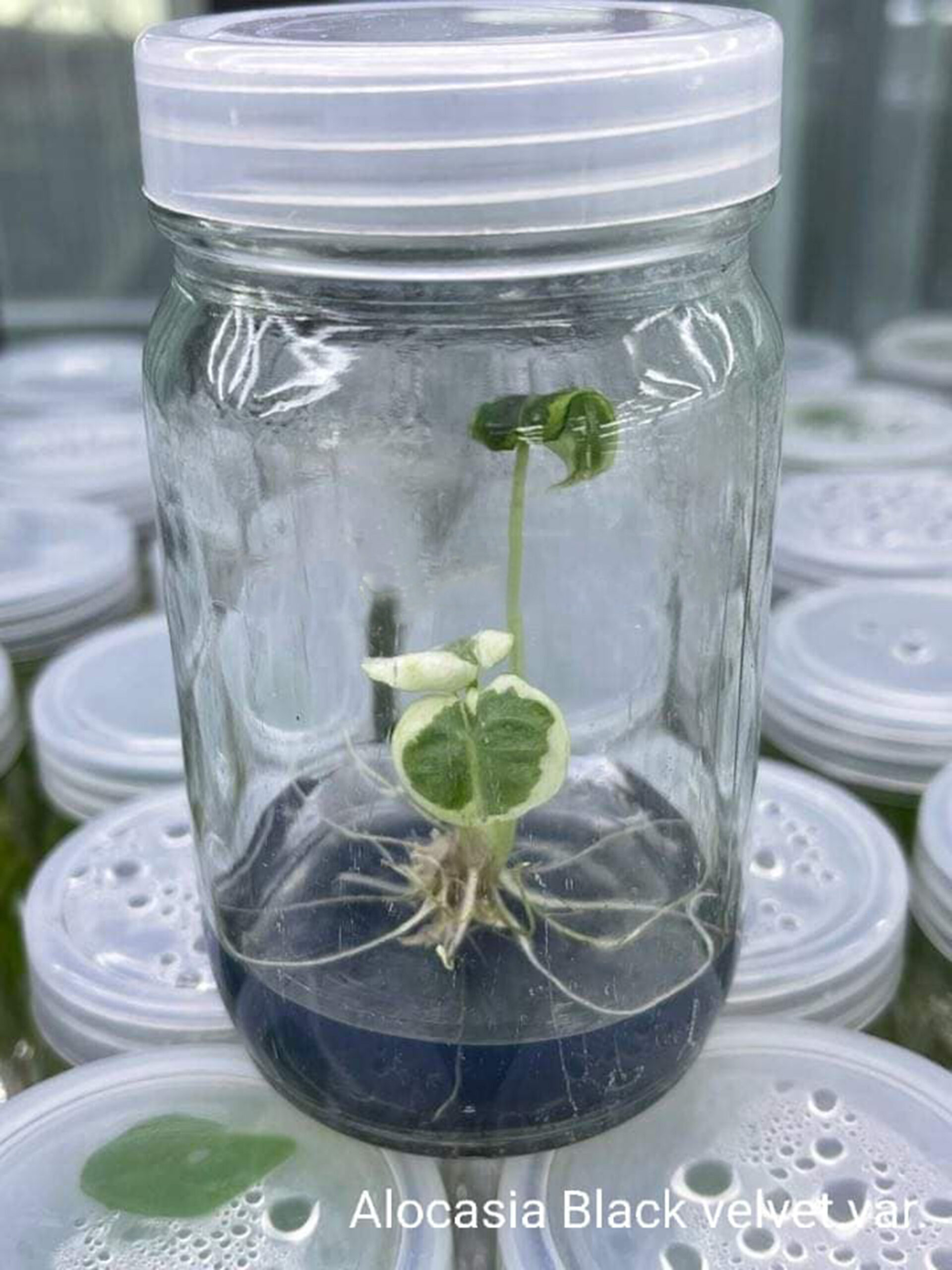
Displaying Alocasia Black Velvet Variegated
This show-stopping alocasia variety works beautifully as a focal point in indoor plant displays. Consider pairing it with other tropical plants or contrasting leaf shapes and colors.
Complementary Houseplants
The dark leaves look striking against lighter green or white-variegated plants like pothos. Called “black velvet” for a reason, it pairs well with other plants with unusual dark foliage.
Decor Styles
The gothic vibe of the alocasia black velvet’s nearly-black leaves works well with moody, dramatic decor themes. It also pops nicely against bright or minimalist backdrops.
Container Choices
Choose containers that allow adequate drainage and have some weight to support the tall, heavy leaves. Neutral pots let the foliage be the star, while glazed ceramic brings out the leaves’ sheen.
Conclusion
With its regal stature, intensely dark foliage, and gorgeous variegation, it’s easy to see why the alocasia black velvet variegated has achieved its popular status. While demanding some specific care, this striking plant rewards growers with its statuesque beauty. If given warm, humid conditions and bright indirect light, the alocasia black velvet unfurls its elegantly patterned leaves as a bold living sculpture.
FAQs
1. Is tissue culture the only way to propagate variegated black velvet alocasia?
No, tissue culture is not the only method. Variegated black velvet alocasia can also be propagated through division or rhizome cuttings. However, tissue culture is often preferred due to its ability to produce a larger number of disease-free plants and maintain the unique variegation patterns.
2. How do I care for variegated black velvet alocasia after tissue culture?
Once the plantlets have been acclimatized, they should be treated like any other variegated black velvet alocasia. Provide them with bright, indirect light, well-draining soil, and consistent humidity. Water the plant when the top inch of soil feels dry, and be careful not to overwater.
3. Can tissue culture be done at home?
While it is possible to perform tissue culture at home, it requires specialized equipment, sterile conditions, and a solid understanding of plant biology and tissue culture techniques. For most hobbyists, it is more practical to purchase tissue-cultured plants from reputable nurseries or growers.
4. Does tissue culture guarantee identical plants?
While tissue culture generally results in genetically identical plants, there is always a possibility of genetic variations or mutations during the process. However, these occurrences are relatively rare and can often be minimized with proper technique and care.
5. Are tissue-cultured plants more susceptible to pests or diseases?
Tissue-cultured plants are typically less susceptible to pests and diseases due to the sterile conditions used during the propagation process. However, it is still essential to monitor your plants and provide proper care to prevent any potential issues.

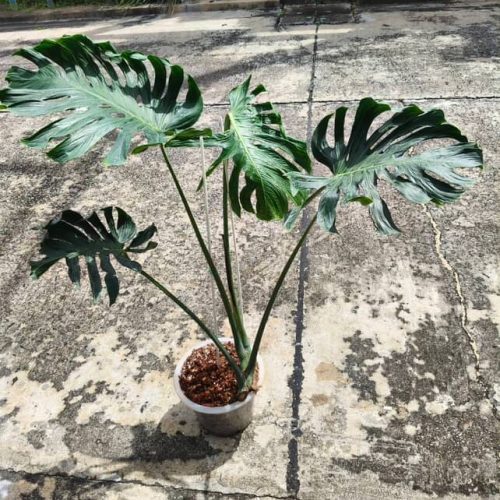
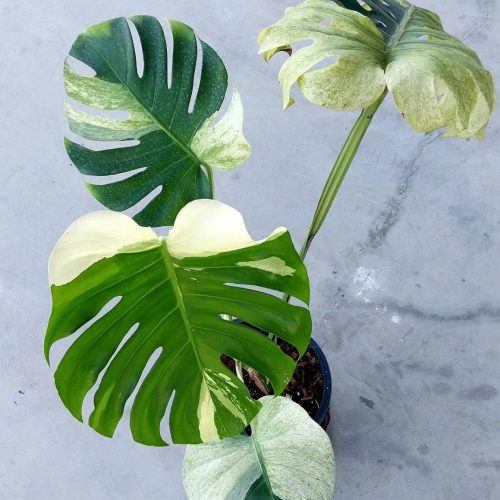



![12x Monstera Borsigiana Albo half leaves variegata [3-4 leaves]](https://greenboog.com/wp-content/uploads/2024/10/Monstera-Borsigiana-Albo-half-leaves-variegata-1-500x500.jpg)
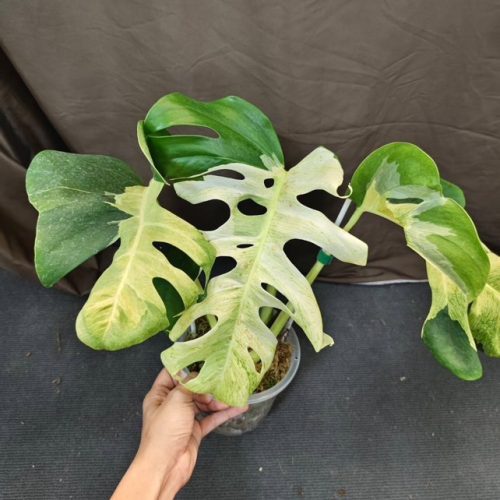

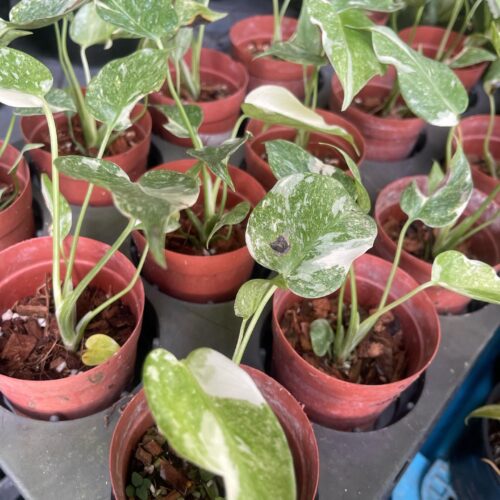
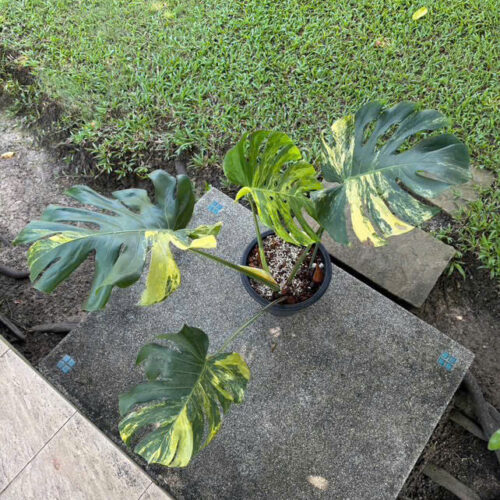
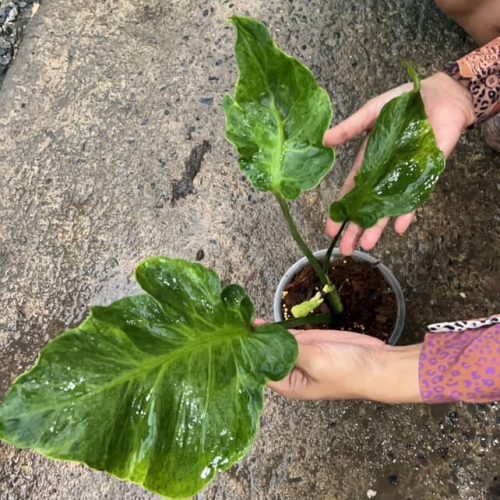
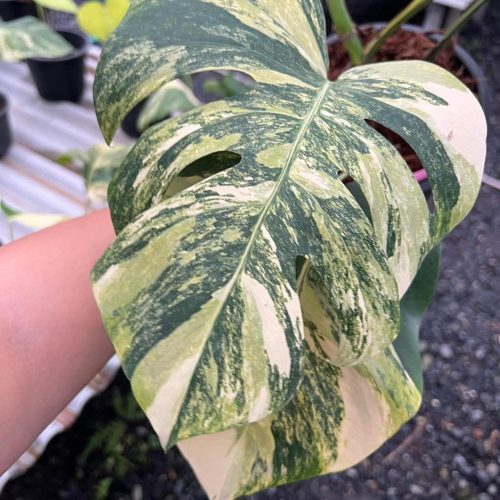

![10 Pots x Monstera Aurea Variegated / Mix Aurea tri color 3-4 leaves [well variegated]](https://greenboog.com/wp-content/uploads/2024/08/Monstera-Aurea-Tri-color-500x500.jpg)
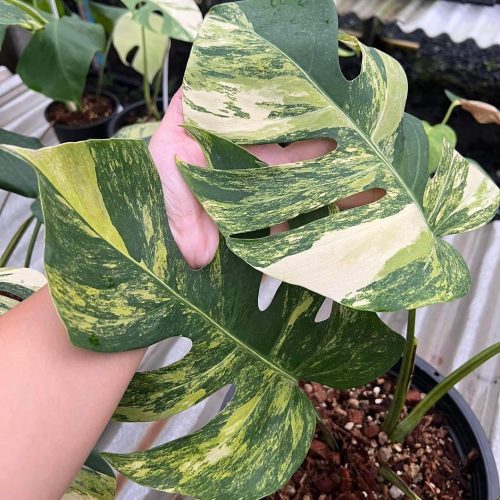
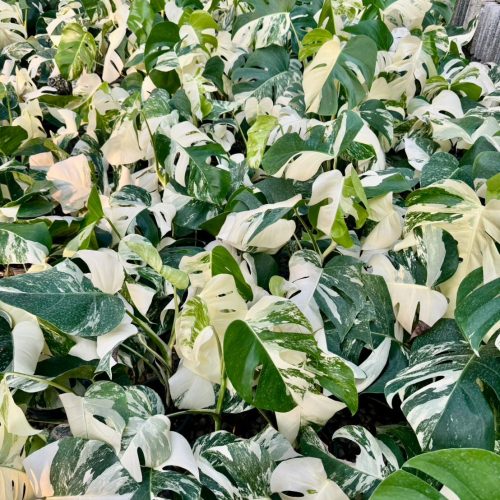
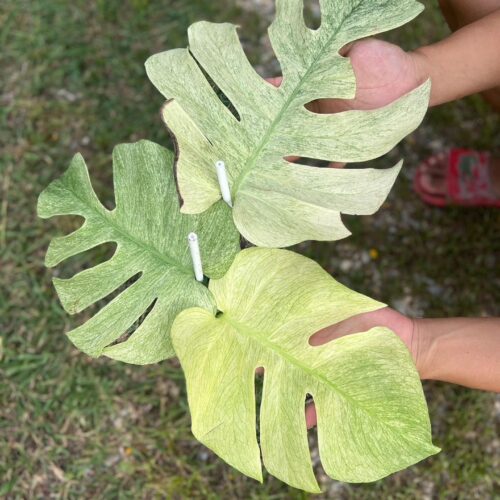
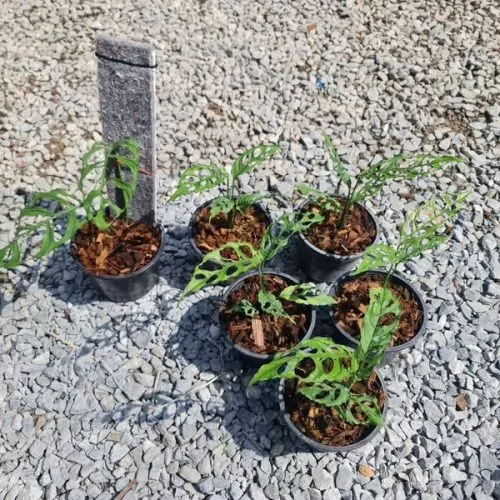
![[SALE] 10 Pots x Monstera Aurea Variegated 3-6 leaves [Medium size]](https://greenboog.com/wp-content/uploads/2025/01/Monstera-Aurea-variegated-4-6-leafs-500x482.jpg)

